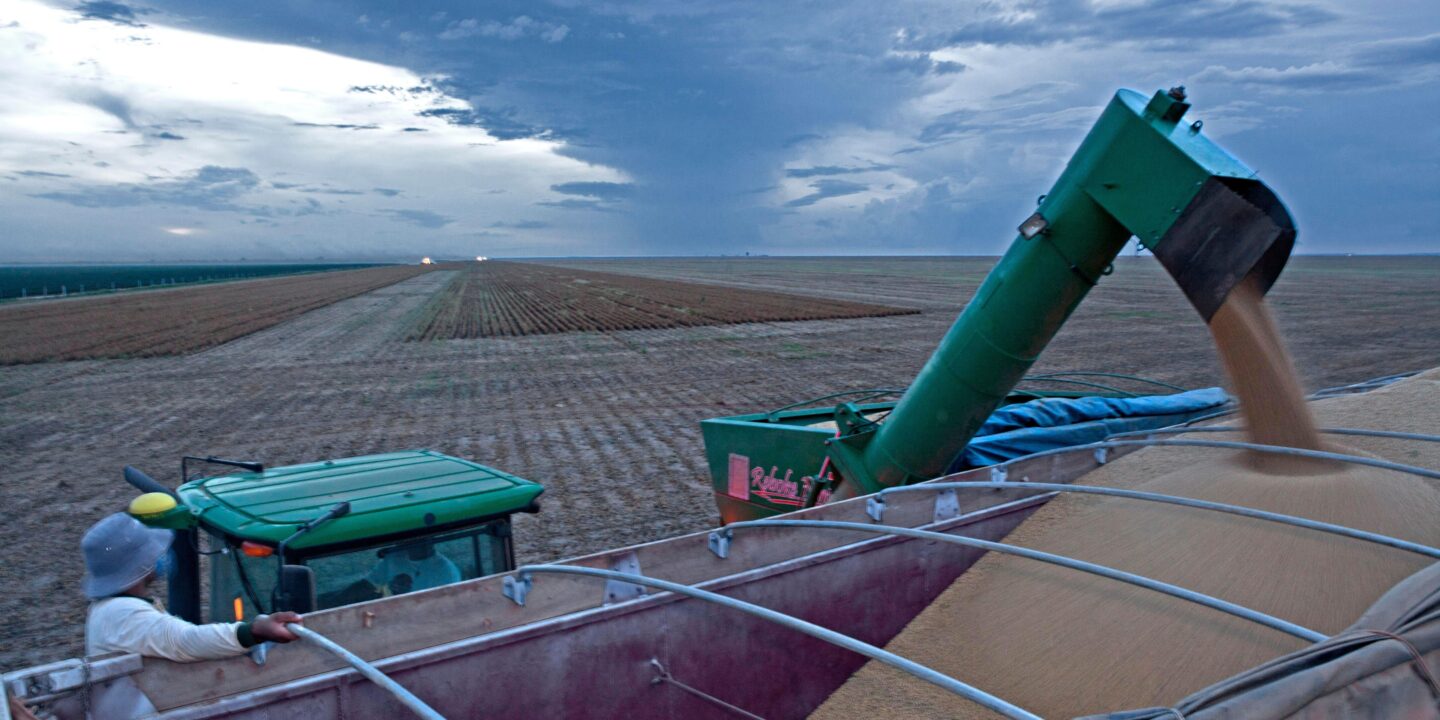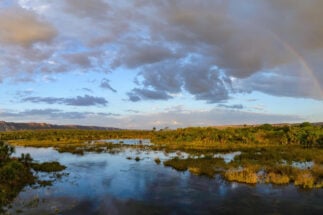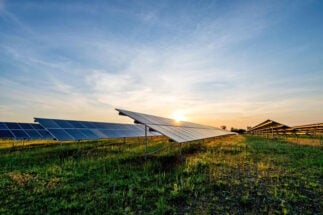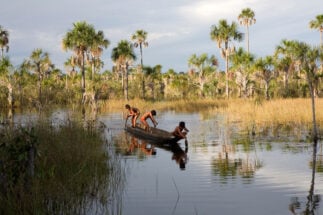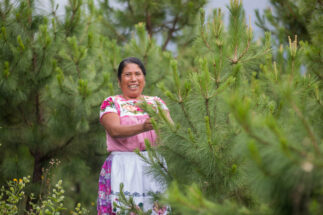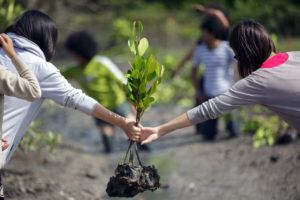Brazil is the world’s largest producer of soybeans, but production and supply chains in the country fall some way short of being environmentally responsible. Today, soybean monoculture is spreading primarily across the Cerrado, the vast savanna biome whose deforestation has reached record levels in recent years, driven by the advancing agricultural frontier of Matopiba – an acronym for the states of Maranhão, Tocantins, Piauí and Bahia.
Experts explain that, together with extensive livestock operations, land speculation and weak environmental enforcement, soy has put pressure on a biome that is essential for the distribution of water in the country, housing springs that feed eight of Brazil’s 12 hydrographic regions.
This pressure comes primarily from failures in the tracking of indirect suppliers in the supply chain. This is the vast network of intermediary operators, such as cooperatives, warehouses and resale warehouses, located between the farmers and the large buyers – the trading companies.
Did you know?
Ten trading companies were together responsible for 77% of soybean exports from Brazil in 2019, which went mainly to China and the European Union..
With the exception of Amaggi, a Brazilian group which cultivates 5% of the volume traded in the country, these companies do not plant soy, but operate in partnership with farms by financing seeds, inputs and pesticides, and then buying and exporting their production. Together, ten trading companies were responsible for 77% of Brazilian soybean exports in 2019, which went mainly to China and the European Union.
Among the major companies operating in the Cerrado, Cargill, ADM, Louis Dreyfus Company (LDC), COFCO and Viterra do not disclose information on tracking indirect suppliers down to the farm level, according to Diálogo Chino’s analysis of their sustainability reports. Amaggi claims to track 22% of its indirect suppliers, and the US giant Bunge, 30%.
Though currently limited, the tracking of indirect suppliers is crucial for trading companies to achieve their goals of zero deforestation in their supply chains: LDC, Bunge and Amaggi plan to reach it by 2025, while Cargill, ADM and COFCO are aiming for 2030.
Unregulated soy mixtures
In the Brazilian soybean market, the grain may pass through several intermediaries before reaching the processing stage or the port. As one worker in the sector recounts, volumes of soy from “regularised” farms – those where land use and production has been permitted – sometimes get mixed in the silos with those from “irregular” areas.
“Most of the soybean around here gets mixed. In the dryers, for example, one load is thrown on top of another,” Aldenir Almeida, a truck driver who transports grains and cereals between the main producing municipalities in Mato Grosso state, told Diálogo Chino.
Ludmila Rattis, a scientist at the Woodwell Climate Research Center, in the US, who follows the Amazon and Cerrado production chains, confirms that soybean mixing does happen. She says a truck can load grains from different producers, and that there are gaps for fraud to occur in warehouses. “In direct supply, it is more difficult for this to be frauded,” she explains.
Lisandro Inakake, project coordinator at Imaflora, an environmental certification organisation, says that “companies have difficulties seeing the journeys of grain” because it “circulates like money”. That is, it is common for soybean to be used as payment for inputs, seeds, loans and financing.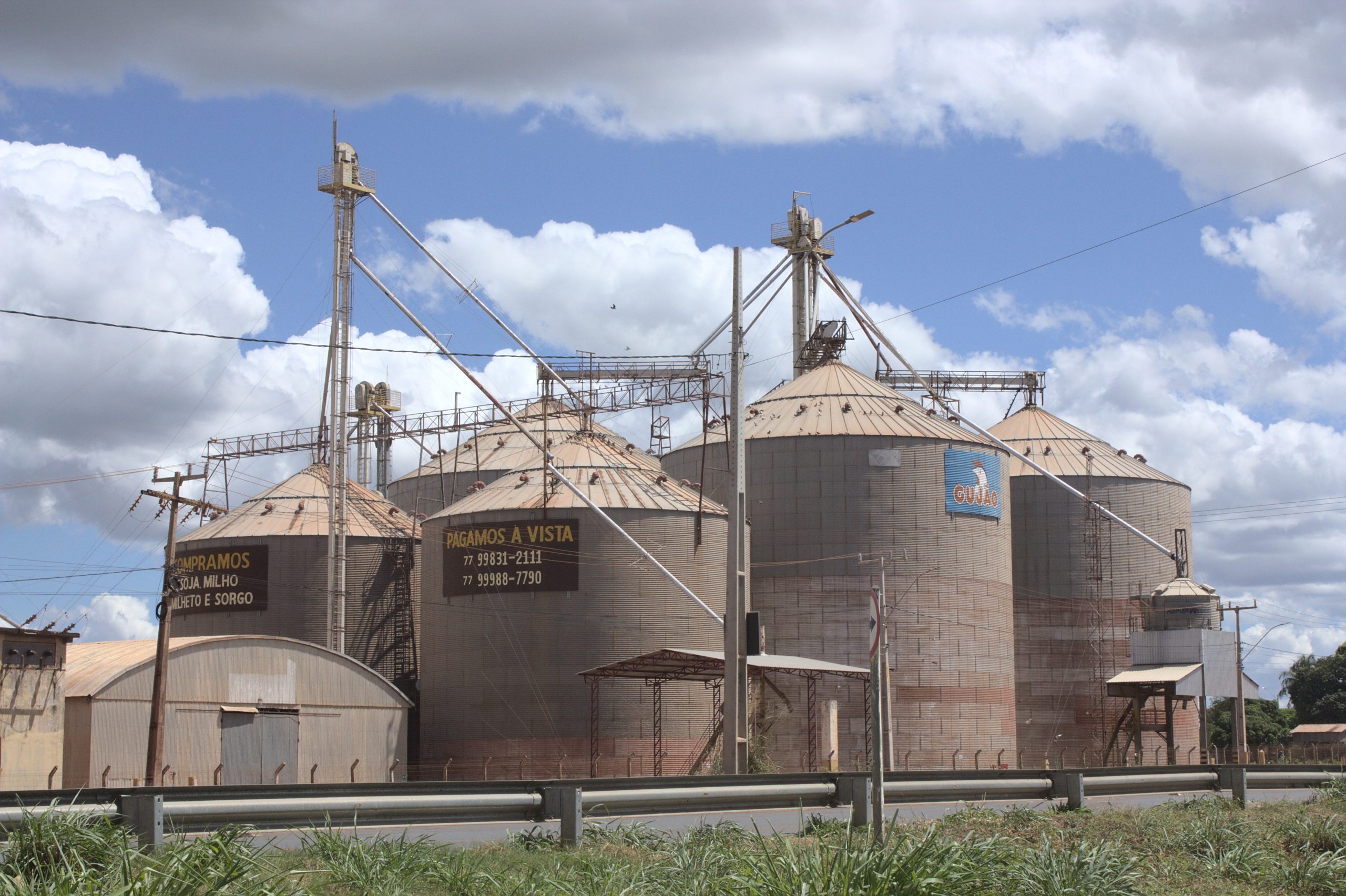
“In general, the cooperatives ask the producer for the CAR only because that’s what the trading company requires. It’s common practice in the market. On the part of cooperatives here, there is no environmental rigour, such as visits to farms or separation of cargoes at warehouses,” says Paulo Santos, a grain broker working in the Matopiba towns of São Desidério and Correntina, some of the country’s major soybean producers.
Although compulsory, the CAR is self-declaratory – and that’s where the problem lies. “The CAR is flawed. The analysis is very slow. Self-declaration gives producers freedom to circumvent violations of environmental legislation,” says Prudente Pereira de Almeida Neto, professor at the Federal University of Western Bahia, in Barreiras, a town also on the agricultural frontier.
For him, loopholes allow soybean contaminated with deforestation to enter the chain: “The CAR may mask a fraudulent reality, since there is almost no inspection. How can one trust a process like that?”
In fact, only 538 of the 959,000 rural properties in Bahia declared in the system have undergone some type of inspection by the state government so far, according to the Brazilian Forest Service bulletin released this year. Furthermore, in 2020, 67.6% of deforestation alerts in the Cerrado were registered in areas declared in the CAR, according to a report from MapBiomas.
Traders’ zero-deforestation targets
In the country that produces and exports more soybean than any other in the world, there is no public system to track the commodity, so the work is left to the sector itself.
The Soft Commodities Forum (SCF), a consortium of six agricultural trading companies, announced at the end of 2021 that it had achieved 100% traceability for its direct soybean suppliers in the Brazilian Cerrado. However, information such as the name, size and location of the farms is not publicly disclosed. Such a lack of transparency is one of the main complaints of international observers who follow the chain closely.
Releasing commercial information is a sensitive issue, which sometimes makes monitoring unfeasible
“The same traders that dominate soy processing and export are much more transparent in the palm oil chain in Indonesia. Why not say where they buy soy from and who they buy it from in Brazil?”, asks Barbara Kuepper, a researcher at the Dutch sustainability organisation Profundo. “I would advocate for more openness, allowing us to track the progress of the commitments [to combat deforestation] made to the Cerrado.”
But the mission is seen as challenging even by researchers in the sector. “It is a complex process because releasing commercial information is a sensitive issue, which sometimes makes [monitoring] unfeasible,” says Imaflora’s Inakake. “The sector is still in the early stages of developing its tracking capacity. The problem of indirect supply is far from having a solution, but there has to be one.”
Cerrado moratorium stalled
Launched in 2006, the Soy Moratorium works as a voluntary pact between the productive sector, environmental organisations and the federal government, and forbids the purchase of soybean cultivated in deforested areas of the Amazon. Studies have shown that this has contributed to the conservation of the forest.
The pact, however, does not cover the Cerrado, where deforestation is advancing. Data from MapBiomas shows that between 2010 and 2020, soybean took over 1.14 million hectares of native vegetation in Matopiba.
“The Cerrado is a strategic biome, but it is being neglected,” warns Julia Shimbo, scientific coordinator of MapBiomas. “We need to maintain the remaining vegetation as a matter of national water and energy security.
“Ironically, we need to balance production and conservation for the sake of the very survival of agriculture, which depends on rainfall.”
Marcos Beltrão is a documentarist who has been recording the disappearance of streams in Correntina, where he lives, and the lowering of the Urucuia aquifer. He warns that, with the moratorium aimed at the Amazon, the devastation has only been moved: “Unfortunately, saving the Amazon has cost the Cerrado. The federal government threw agribusiness here.”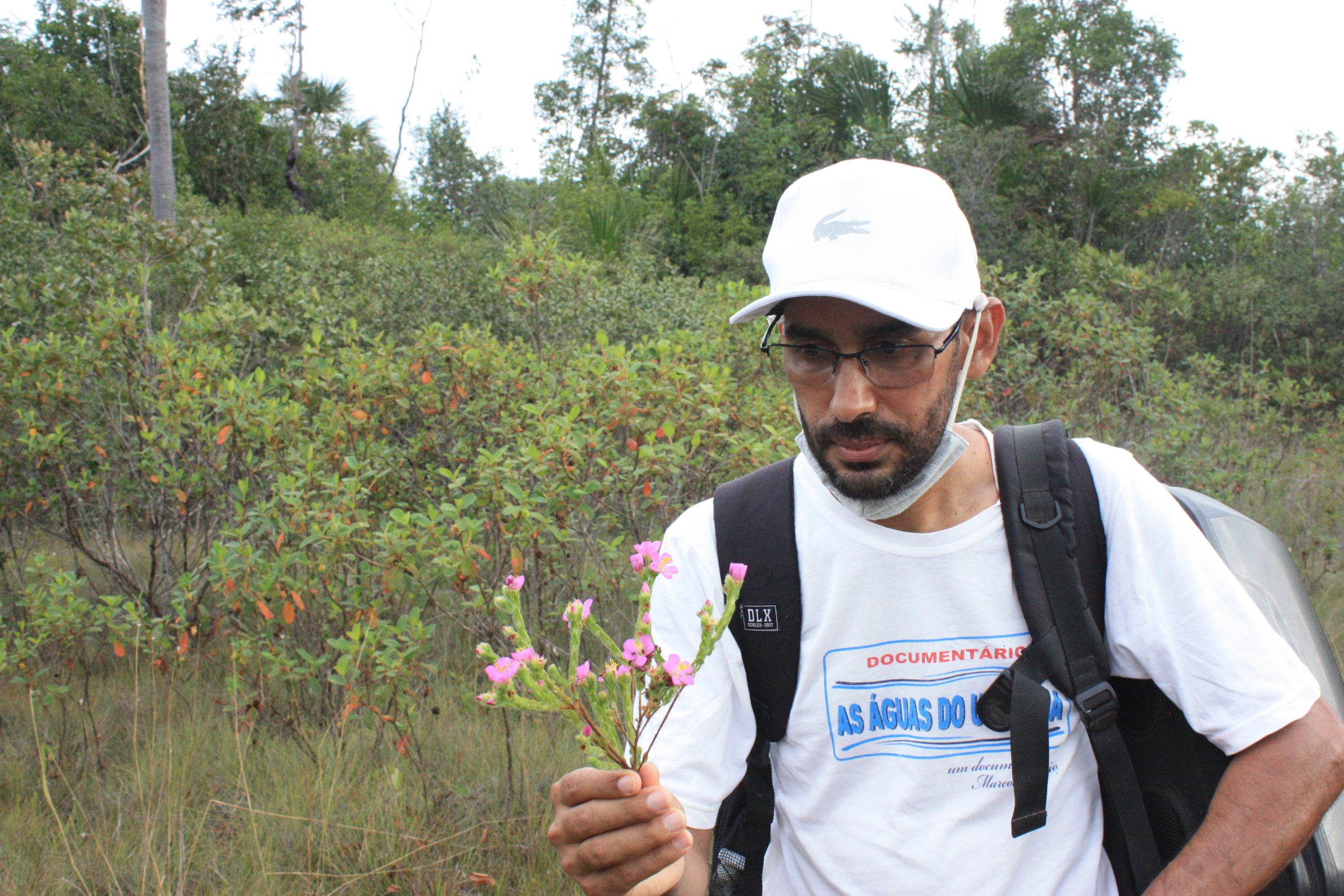
Bernardo Pires, sustainability manager at the Brazilian Association of Vegetable Oil Industries (Abiove), which represents 13 soybean trading companies, explains that instead of a moratorium, the sector has proposed a payment for environmental services to producers: “[It would be] something around US$200 per hectare a year, in which whoever conserves, wins. That would be easier and more efficient than a new moratorium.”
In 2017, 60 environmental organisations launched the Cerrado Manifesto, calling for the involvement of trading companies to end deforestation in the biome, which was already held to be serious by environmentalists. In 2020, 163 multinationals, including Tesco, Walmart, Unilever and McDonald’s, came out in support of the manifesto and demanded a ban on purchases associated with devastation. However, no progress was made.
We need to balance production and conservation for the sake of the very survival of agriculture
Abiove said at the time that the demand was “unfeasible” and did not grant the request. But Pires says that the association checks public databases on a daily basis, such as lists of environmental embargoes by the Brazilian Institute of the Environment and Renewable Natural Resources (Ibama), the federal inspection agency and state secretaries, in addition to deforestation information from the federal government’s Prodes Cerrado. “The check involves 90,000 farms… If any of them shows environmental non-compliance, the farmer is blocked,” Pires says.
Abiove does not disclose, however, which farms these are or who they supply. Without information, Brazilian consumers can only check, through the label, which company manufactured their cooking oil. From there on, nothing else is clear. Elsewhere, Imaflora’s Soy on Track platform allows the monitoring of the progress of agreements related only to the Amazon.
The reporter requested an interview with seven trading companies with operations in the country, but received no response; Abiove spoke on behalf of its members.
Productivity versus problems
Cocos, in the extreme west of Bahia, is not on the list of 61 municipalities that SCF considers to be at high risk of deforestation; the consortium’s trading companies also focus their monitoring on those locations. Even so, since agribusiness arrived here in the 1980s, it has seen 71,300 hectares of deforestation.
“The devastation in Cocos is high. The forests are disappearing because of colossal agricultural and cattle ranching enterprises. Everything is going to become desert,” says Albanir Souza, a priest from the region who, between 2011 and 2015, worked with the country’s Public Prosecutor’s Office for the recognition of the local Xakriabá ethnic group.
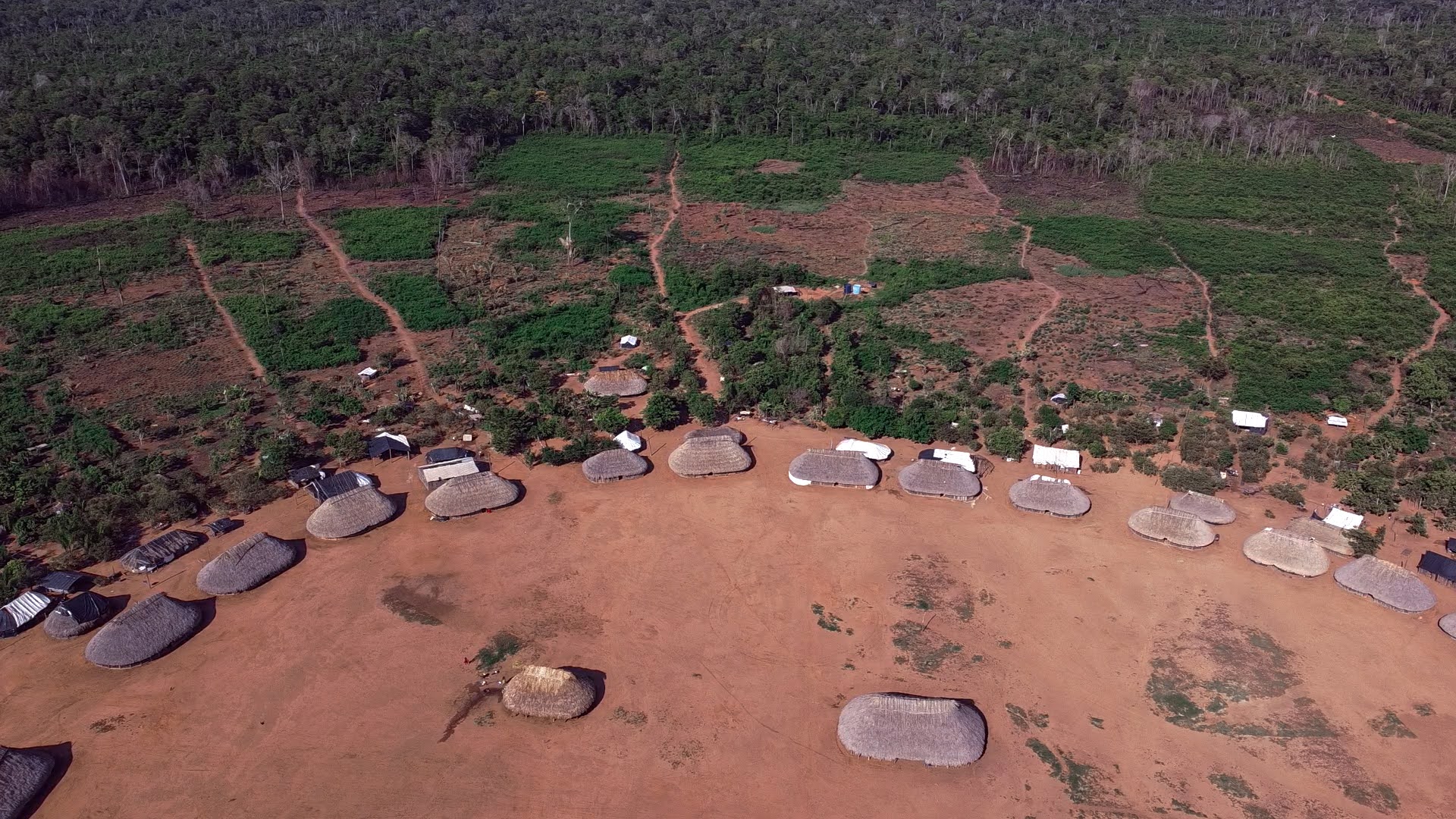
The municipality helps ensure high soybean productivity in the state, but also has various environmental, land tenure and human rights problems. Now a parish priest in Correntina, Albanir Souza has even been prevented from celebrating mass in the municipality and threatened by gunmen, who he claims were hired by farmers who wanted to appropriate the lands occupied by indigenous people.
Xakriabá communities have lived in Cocos since 1933, when they migrated from their home village in São João das Missões in Minas Gerais state, fleeing conflicts with cattle ranchers. In the 1980s, they began to suffer pressure from farmers who coveted their land to plant eucalyptus, which did not work out well in these areas.
Today, irrigated soybeans, corn and coffee, as well as projects for small hydroelectric plants on the nearby Carinhanha river, are making life less peaceful for these indigenous people. To this day they, their territories have not been officially demarcated, as the majority of the indigenous peoples of Bahia do, even though this is a right provided for in the Brazilian constitution.
